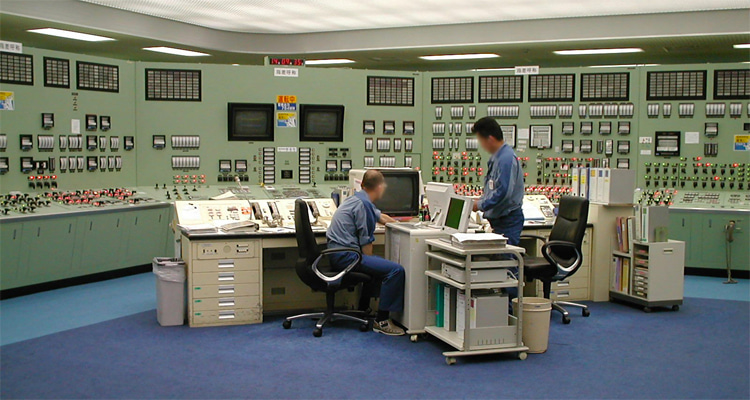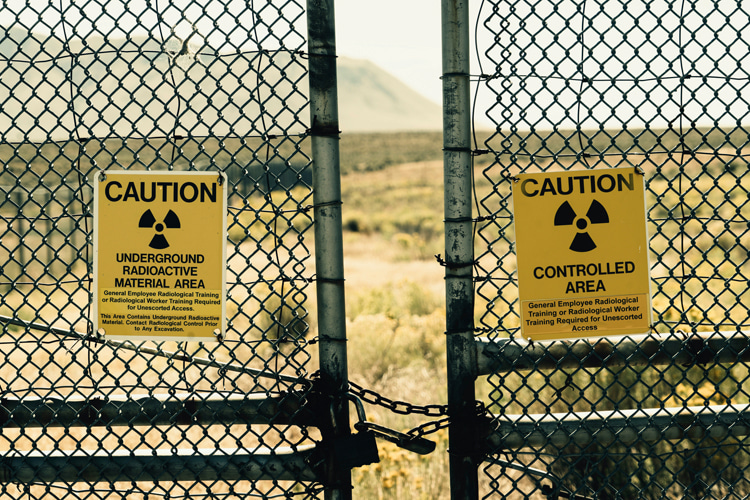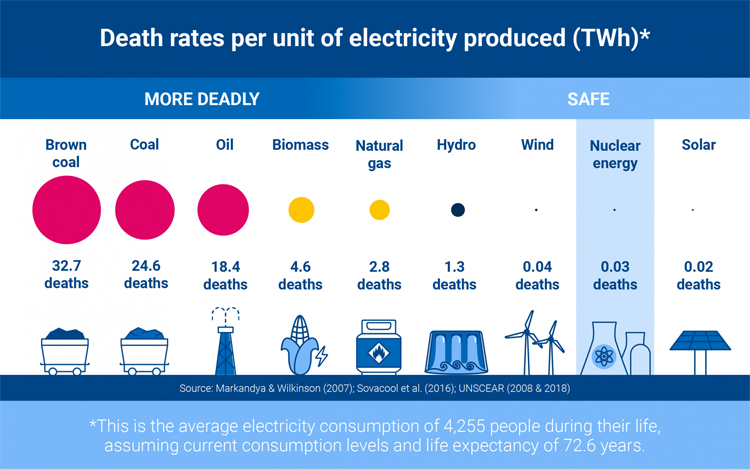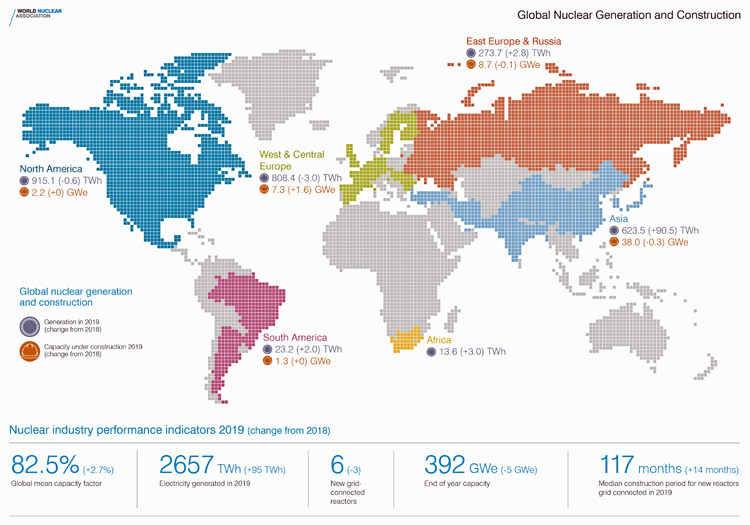From powering the lightbulbs in our homes to driving the engines of industry and wave pools, energy fuels our modern lives.
Each source of energy, however, has its unique pros and cons.
This time, we'll delve into one of the most powerful and controversial energy sources - nuclear power.
Understanding Nuclear Energy: An Introduction
Nuclear energy, or atomic energy, is a form of power obtained through a series of physical processes involving the nuclei of atoms.
Originating in the mid-20th century, this energy source is derived primarily from two methods: nuclear fission and nuclear fusion.
In nuclear fission, scientists split the nucleus of an atom, which releases a substantial amount of heat energy.
In nuclear fusion, which is the same process that powers our Sun, the nuclei of two atoms are combined to create a larger atom, releasing a significant amount of energy.
However, it's essential to note that nuclear fusion is still largely experimental and has not yet been used for commercial power generation.
The Advantages of Nuclear Power
1. High Energy Density
Nuclear power has an extremely high energy density - that is, it produces a lot of power from a small amount of fuel.
According to the World Nuclear Association (WNA), a uranium fuel pellet (smaller than your fingertip) can produce as much energy as 17,000 cubic feet of natural gas, 1,780 pounds of coal, or 149 gallons of oil.
2. Low Greenhouse Gas Emissions
Unlike fossil fuels, nuclear power generates electricity without releasing harmful greenhouse gases like carbon dioxide.
As such, it is often regarded as a "clean" energy source, at least from a greenhouse gas perspective.
3. Base Load Power
Nuclear power plants can consistently generate power, irrespective of weather conditions.
Unlike some renewable energy sources, such as wind and solar, nuclear power does not rely on the time of day or the weather, making it an excellent baseload power source.
4. Long-term Energy Source
Nuclear fuel, like uranium, is abundant and can provide power for several decades, making it a sustainable energy source over the long term.
5. Technological Advances
Advancements in nuclear technology and the development of new types of reactors, such as small modular reactors (SMRs) and Generation IV reactors, could potentially enhance efficiency and safety in nuclear power generation.
6. Job Creation
The construction, operation, and maintenance of nuclear power plants require a substantial workforce, creating numerous job opportunities.
According to the U.S. Bureau of Labor Statistics, these are typically high-paying jobs, contributing significantly to local economies.

The Drawbacks of Nuclear Power
However, nuclear power has its drawbacks.
1. Radioactive Waste
One of the most significant issues with nuclear power is the radioactive waste it produces.
This waste remains hazardous for thousands of years and poses significant long-term storage challenges.
2. Potential for Accidents
Though nuclear power plants are designed with numerous safety features, accidents can still occur.
The Chernobyl and Fukushima disasters are grim reminders of the devastating environmental and health consequences that nuclear accidents can cause.
3. High Initial Costs
While nuclear power plants have low fuel costs, their initial setup costs are extremely high.
These include the cost of constructing the plant, maintaining safety measures, and eventually decommissioning the plant.
4. Finite Resources
While uranium, the most commonly used fuel in nuclear reactors, is abundant, it's not infinite.
The extraction and refining process of uranium is also energy-intensive and can be harmful to the environment.
5. Proliferation Risk
There's always a risk that the technology and materials used for peaceful nuclear energy can be diverted for weapons production.
Nuclear proliferation, or the spread of nuclear weapons, is a major global security concern.
6. Long-term Commitment
Once a country embarks on building a nuclear power plant, it is a commitment for many decades, given the lifespan of these plants.
Furthermore, decommissioning a nuclear power plant at the end of its life is a long, complex, and expensive process.

Comparing Nuclear Energy to Other Energy Sources
When compared to fossil fuels, nuclear energy is cleaner and more efficient.
It does not produce air pollution or contribute significantly to climate change.
However, the handling and storage of radioactive waste pose significant challenges.
Compared to renewable energy sources, nuclear energy has the advantage of providing continuous power.
However, renewables are generally safer and do not produce hazardous waste.
Renewables are becoming increasingly competitive in terms of cost, and in some instances, they're even cheaper than nuclear power.
To conclude, the question of whether to use nuclear energy is a complex one, filled with trade-offs.
It has significant advantages in terms of efficiency and greenhouse gas emissions.
Still, it also presents substantial challenges, such as handling radioactive waste and the potential for catastrophic accidents.
As we look to the future, our energy solutions will likely need to involve a balanced energy mix, including nuclear, renewables, and potentially other yet-to-be-discovered technologies.

The Future of Atomic Energy
Looking ahead, technological advancements could help mitigate some of the disadvantages of nuclear power.
For example, newer reactor designs aim to be safer and more efficient, and research is underway to find better ways to handle radioactive waste.
Moreover, if successfully harnessed, fusion power could provide an almost limitless and relatively safe energy source.
In the end, understanding the pros and cons of nuclear energy allows us to make informed decisions about our energy future.
While nuclear power comes with significant challenges, its potential as a high-output, low-emission energy source is undeniable.
Balancing this potential with its risks and the promise of other energy sources is a task that will require the combined efforts of scientists, policymakers, and the public alike.
In a world increasingly conscious of the environmental impacts of our energy choices, the conversation about nuclear power is relevant and crucial.
As with any major decision, the key lies in education and open discussion based on reliable facts - because, after all, the choices we make today will power the world of tomorrow.

Interesting Facts and Figures About Nuclear Energy
- Number of Nuclear Power Plants: As of May 2023, according to WNA, there were approximately 436 operational nuclear reactors across over 30 countries worldwide;
- Powering the Planet: Nuclear energy is responsible for 10 percent of the world's electricity consumption;
- Highest Nuclear Energy Producers: The United States (91.5 GW), France (63.1 GW), and China (50.8 GW) are the top three countries in terms of nuclear power generation;
- France's Dependency: France relies on nuclear power for about 70 percent of its total electricity, the highest percentage in the world;
- Energy Density: One uranium fuel pellet, which is about the size of a pencil eraser, provides as much energy as one ton of coal, 149 gallons of oil, or 17,000 cubic feet of natural gas;
- Long Lifespan: A nuclear power plant has an average lifespan of 40-60 years, but many plants have been granted extensions, pushing their operational lives to as much as 80 years;
- Emission-Free Operation: Nuclear power produces virtually no greenhouse gas emissions or air pollutants during operation. Over its full lifecycle, it results in comparable emissions to renewable forms of energy such as wind and solar;
- Waste Production: The U.S. nuclear industry has produced over 80,000 metric tons of used nuclear fuel since the 1950s. Although it's a small volume, this high-level radioactive waste remains hazardous for thousands of years;
- Accident History: There have been three major nuclear power accidents in history: Three Mile Island in the U.S. (1979), Chernobyl in Ukraine (1986), and Fukushima in Japan (2011);
- Fusion Power: Scientists have been working on nuclear fusion - the power source of the sun and stars - for over half a century. If they successfully create a practical fusion power plant, it could offer nearly limitless, clean energy. However, as of 2023, no one has yet developed a commercially viable fusion reactor;
